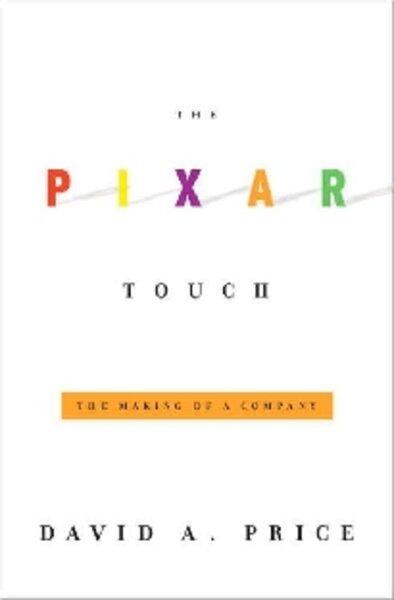The Pixar Touch
Loading...
It’s a rags-to-riches story, a classic example of the cream rising to the top. And it’s as entertaining and heartwarming as, say, a Pixar movie. It’s The Pixar Touch: The Making of a Company, and its topsy-turvy, roller-coaster plot has all the thrills of a ride at Disneyland.
In this unauthorized account of Pixar, journalist David A. Price paints the most complete picture yet of the little studio that could. He talks to scores of insiders, Pixar colleagues and members of the “fraternity of geeks,” true believers in the potential of the pixel to revolutionize animation.
With the precision of a technical writer and the sensitivity of an artist, Price spins the story of the Pixar vision, its achievement, and its art. His ability to turn geekese into plain-old English is a real gift to the reader.
The Pixar idea took root in the fertile imagination of Ed Catmull, a soft-spoken, former Mormon missionary, who entered grad school at the University of Utah in 1970.
Price writes, “Now and then in history one finds a time and a place that seems to be charmed, where talent has assembled in a way that appears to defy all laws of probability.” Such a place was Salt Lake City in the late 1960s and early ’70s.
Specifically the U. of U.’s groundbreaking computer graphics department, which incubated a dazzling array of dreamers, designers, and eggheads (many of whom are still dazzling us today on our flat-screen TVs, Game Boys, and multiplex screens.)
Catmull graduated with dreams of converting the world to digital. The problem was, there were no jobs available in a field that didn’t yet exist. After a few years scuffling for work, Catmull shelved his dreams and took a 2-D programming job in Boston.
Meanwhile, in California, young John Lasseter had idolized the great Disney animators since the age of 5. In 1979, after acing his classes at Disney-affiliated California Institute of the Arts, he was recruited as a junior animator for his boyhood idols.
But his dream job proved to be more of a nightmare, as most of the old guard had retired and the dispirited department seemed rudderless without Walt Disney’s involvement and inspiration (the Disney founder had died in 1966).
Lasseter’s attempts to convince the department that the future of animation was digital were met with scorn and, after less than four years on the staff, he was fired. “It was like my heart was ripped out,” he recalled. “This was not what I always dreamed Disney was.”
By 1983, Catmull was back in the dreaming business at George Lucas’s Lucasfilm in northern California, employing digital graphics to create special effects for the “Star Wars” movies and other Lucas projects. Learning that the talented Lasseter was available, Catmull hired him immediately, beginning a partnership that today, two decades later, is responsible for all creative output at Disney.
On the block for a mere $5 million
The only problem was, at the time, Lucas wasn’t at all interested in animation and was having major financial troubles. So in 1986, the computer graphics group was shopped around. It found no takers until the infamous, recently terminated Apple cofounder Steve Jobs rode in on his white horse (or black, depending on one’s point of view) to snap up the talented crew for a paltry $5 million.
Pixar’s savior would prove to be a pain in the saddle with his confrontational style, but as a fellow visionary, he saw their massive potential. Jobs demanded, however, that Pixar become a viable, moneymaking business, and quickly.
After many years spent experimenting and creating short, but amazing digitally animated films and television commercials, the company had failed to turn a profit. Far from it – they had burned through $50 million of Jobs’s fortune.
Then, in 1991, Disney, with ambitious, big-thinking CEO Michael Eisner at the helm, finally decided to take a chance on one of Lasseter’s ideas: a digital animation about toys that come to life.
The rest is history. “Toy Story” was a megahit the world over and placed Disney back atop the animation pedestal, where it still reigns today.
Sold again for $7.4 billion
In 2006, Disney came to its senses and ponied up a whopping $7.4 billion to acquire Pixar “as the crown jewel of the Walt Disney Co,” installing Lasseter as Disney’s chief creative officer and Catmull as president of the combined studios.
Price calls Pixar’s story ”a triple helix of artistic, technological and business struggles.... It shows how small things, done well, can lead to big things.” In the case of Pixar, really big things: like four out of the 10 highest-grossing animated films of all time.
John Lasseter said it best. “Quality is a great business plan. Period.”
John Kehe is the Monitor’s design director.






